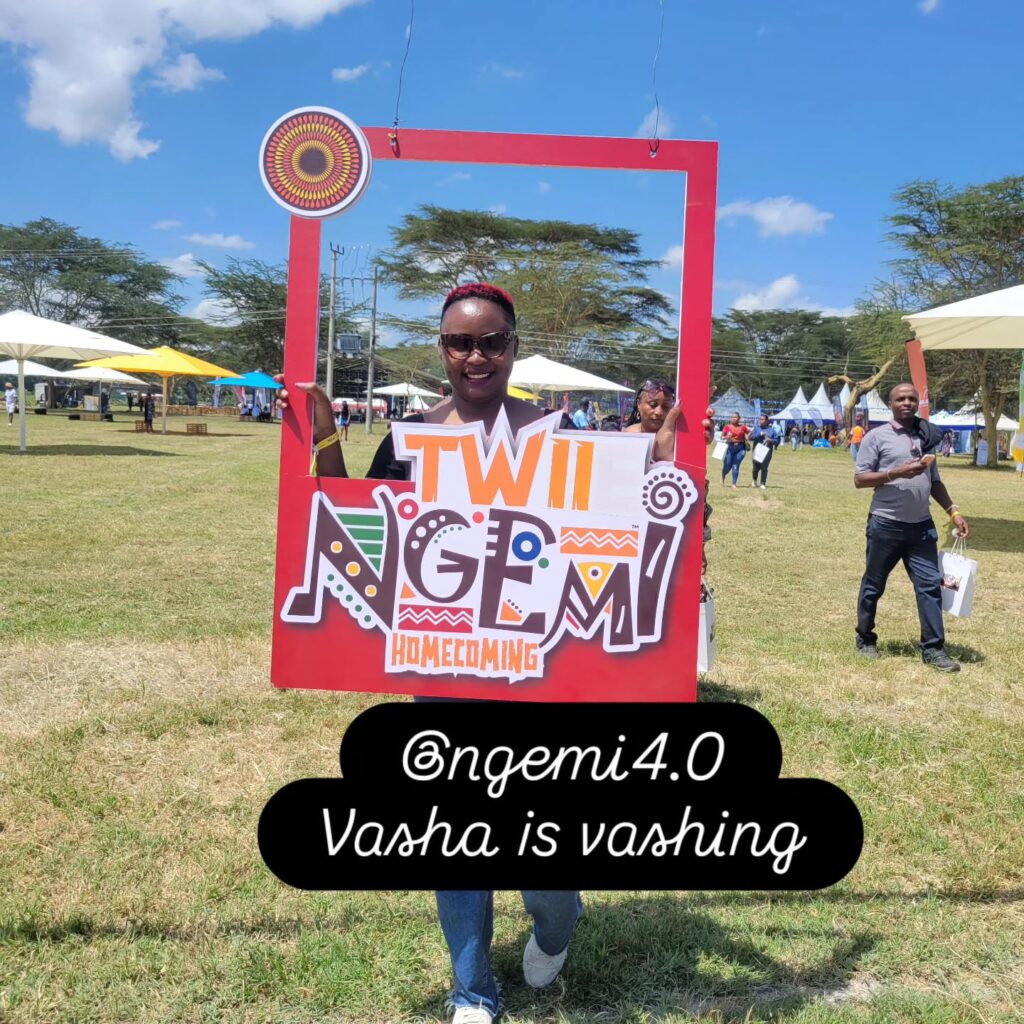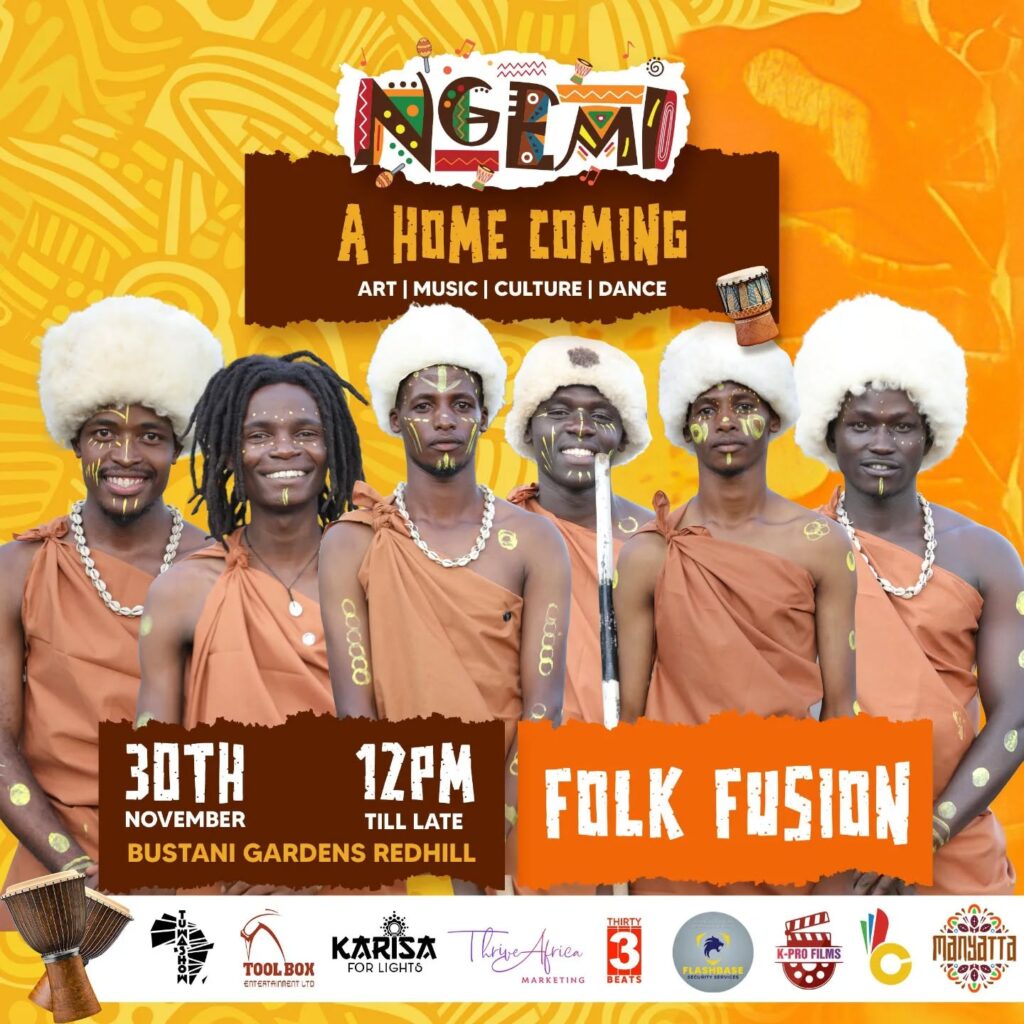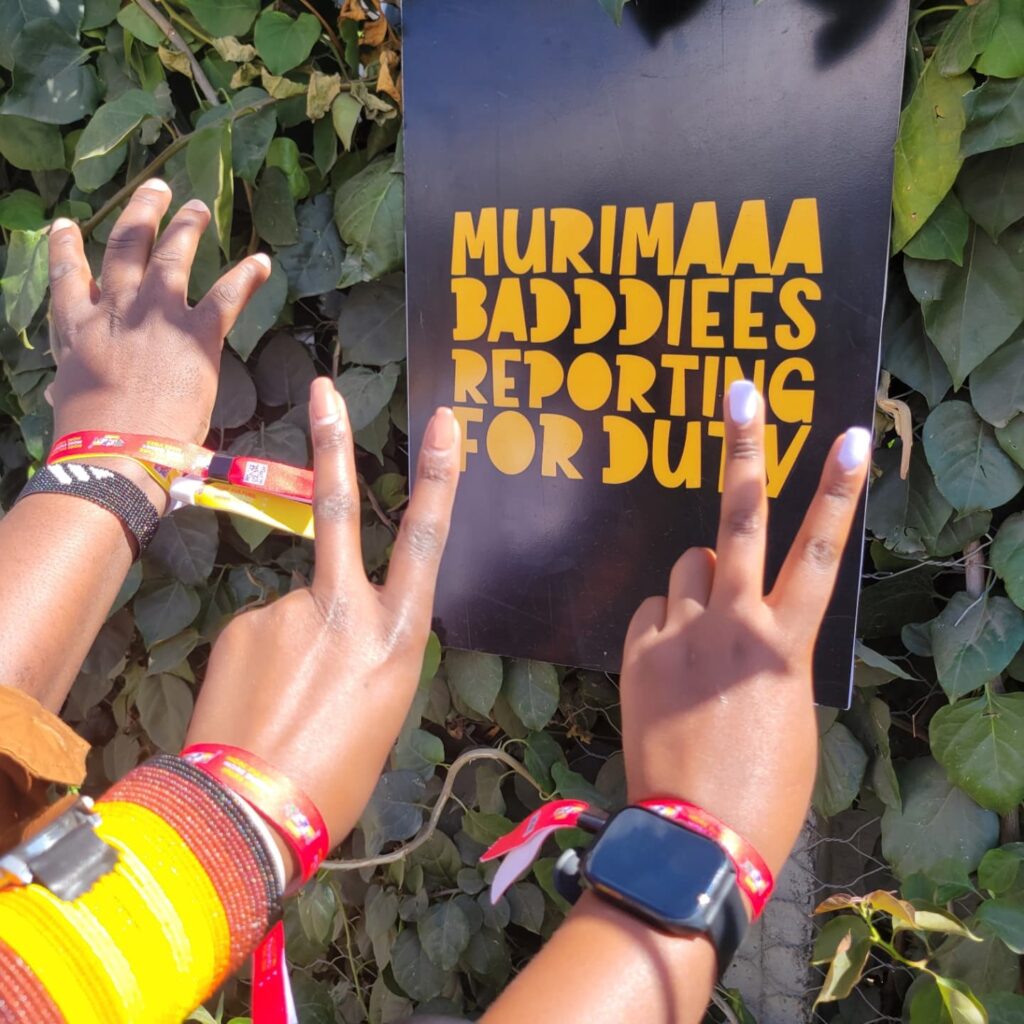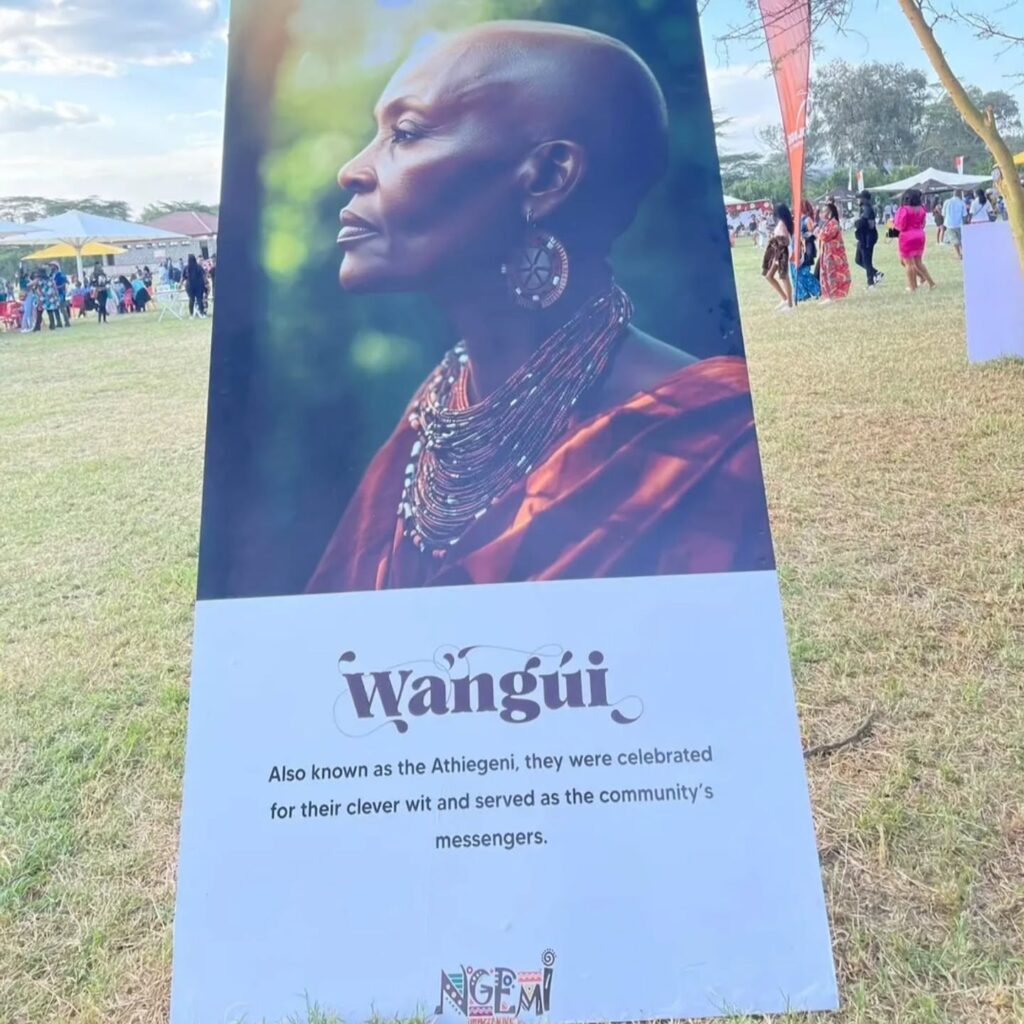Rediscovering Identity — The Rise of Ngemi Festival
Introducing Ngemi Festival
The Ngemi Festival is one of the most exciting cultural events to emerge in Kenya in recent years. Derived from the Kikuyu word “ngemi,” which means ululation—a sound of joy, victory, and unity—the festival captures the essence of celebration and belonging. It is not just a gathering but a living, breathing movement that merges traditional heritage with modern artistic expression.
Initially launched in 2024 by a small group of friends, Ngemi Festival was designed to reconnect Kenya’s youth, particularly Gen Z and millennials, with their Kikuyu roots. Over time, it has blossomed into a national attraction that brings together music, art, food, and storytelling in a truly immersive way.
The festival’s vision is clear: to create a platform where cultural pride meets modern creativity, ensuring indigenous traditions are preserved, celebrated, and reimagined for future generations.
The Growth of Ngemi Festival

The rise of the Ngemi Festival has been nothing short of remarkable. In just a short time, it has evolved from a small cultural gathering into one of the most anticipated events on Kenya’s entertainment and cultural calendar. Each edition of the festival has outdone the previous one, demonstrating that there is a strong appetite for events that celebrate Kenyan traditions in a modern and vibrant way.
Ngemi Festival 1.0 — A Humble Beginning
The very first Ngemi Festival, often referred to as Ngemi Festival 1.0, was held in early 2024. At the time, it was a modest event designed primarily for Kikuyu elites who wanted to immerse themselves in music and heritage. The gathering was intimate, with performances from traditional mũgithi artists and upcoming Kikuyu musicians.
Although the attendance was limited, the festival created a unique atmosphere that struck a chord with participants. For many, it was a nostalgic reminder of their cultural roots, while for others it was an eye-opener to a side of Kikuyu traditions they had never truly experienced. The success of this first edition set the stage for what was to come.
Ngemi Festival 2.0 — Building the Momentum
Later in 2024, the organizers returned with Ngemi Festival 2.0, hosted at Red Hill in Limuru. Unlike the first edition, this event attracted a much larger audience, including young professionals, university students, and cultural enthusiasts who had heard of the festival’s fresh approach to blending tradition with fun.
The setting in Limuru’s lush hills created an unforgettable backdrop, allowing participants to enjoy not just the performances but also the natural beauty of Kenya’s landscape. By the end of the night, it was clear that Ngemi Festival had tapped into a cultural void—Kenya needed a festival that was proudly indigenous yet modern enough to appeal to a new generation.
Ngemi Festival 3.0 — A Cultural Explosion
By the time Ngemi Festival 3.0 came around in March 2025, the event had already become a cultural sensation. Hosted at Eva’s Garden in Redhill, Limuru, the festival sold out an entire month in advance, showing just how popular it had become.
The lineup was electrifying, with performances from some of the biggest names in Kikuyu entertainment. Artists like Samidoh, Wanjiine, and Aunty Jemimah brought the stage to life with their high-energy shows, while other emerging talents kept the crowd engaged with fresh sounds. Fans danced to mũgithi tunes, sang along to vernacular hits, and experienced cultural pride in ways that had rarely been seen before.
What stood out most about this edition was how inclusive it felt. It wasn’t just Kikuyu-speaking audiences who attended—people from different tribes and backgrounds joined in, curious to learn and celebrate Kikuyu heritage. The vibrant fashion, authentic cuisine, and electrifying atmosphere made Ngemi Festival 3.0 a true landmark event.
Ngemi Festival 4.0 — A National Phenomenon
The most ambitious edition yet, Ngemi Festival 4.0, took place in Naivasha from May 31 to June 1, 2025. This was the first time the festival was held as a two-day event, with venues spread across The Garden on Moi South Lake Road and Captain James Camp.
Attendance records were shattered. Thousands of fans from across the country and even international visitors thronged Naivasha to be part of the experience. The buzz was so big that tickets sold out in less than a week, sparking conversations online about making Ngemi Festival a public holiday celebration.
This edition cemented the festival’s reputation as not just a Kikuyu cultural gathering but a Kenyan cultural powerhouse. Its scale, organization, and programming proved that Ngemi Festival had matured into a giant on the festival circuit.
From its humble beginnings to becoming a must-attend cultural event, Ngemi Festival’s journey illustrates how a simple idea rooted in heritage can grow into a unifying national movement.
What Makes Ngemi Festival Unique
Cultural Immersion

The Ngemi Festival is not your typical music event. What sets it apart is the deep immersion into Kikuyu traditions that it offers. Every element of the festival—music, art, food, fashion, and storytelling—is designed to showcase the beauty of Kikuyu culture.
- Music: Attendees are treated to live performances of mũgithi, Kikuyu folk songs, and Benga-inspired rhythms. These sounds blend nostalgia with entertainment, allowing older generations to reminisce while giving younger audiences a taste of their heritage in modern formats.
- Art: From colorful beadwork to handwoven baskets, intricate sculptures, and captivating paintings, the festival displays works that embody Kikuyu folklore and history. Art becomes a tool of storytelling, keeping ancestral narratives alive.
- Food: Culinary experiences are just as central. Festival-goers savor Kikuyu classics like mukimo, njahi, githeri, roasted bananas, and the traditional brew muratina. Sharing these meals is more than eating—it’s about rediscovering foodways passed down through generations.
A Celebration Beyond Entertainment
At its core, Ngemi Festival is about preservation. Many African traditions suffered disruptions during colonial times, leading to cultural dilution. Through storytelling sessions, traditional performances, and intergenerational dialogue, the festival actively works to reclaim and restore cultural pride.
Unlike commercial concerts, Ngemi Festival feels safe, authentic, and intentional. Attendees consistently describe the atmosphere as vibrant yet respectful, a curated space where people can enjoy themselves without worrying about insecurity or chaos.
Generational Health & Inclusivity
A defining feature of Ngemi Festival is how effectively it appeals to young Kenyans. Around 70% of attendees are Gen Z and millennials, proving that the event resonates with the country’s future leaders and creatives. At the same time, 30% of attendees come from other communities, making the festival inclusive and diverse.
This inclusivity transforms Ngemi Festival into more than a Kikuyu event—it becomes a melting pot of Kenyan unity. Young people reconnect with their roots, while outsiders gain an opportunity to learn and appreciate Kikuyu traditions.
Culture Meets Modern Expression
Music & Artistic Fusion
Ngemi Festival thrives on its ability to marry tradition with modernity. Traditional Kikuyu music is reimagined through collaborations with urban artists, creating unique fusions that appeal across generations. Mũgithi blends seamlessly with modern beats, while vernacular storytelling is paired with contemporary spoken-word performances.
Digital art installations, contemporary dance, and poetic recitals add to the creative variety, ensuring that the festival remains relevant to both traditionalists and modernists.
Networking, Fashion & Community

More than just an entertainment platform, Ngemi Festival is an elite cultural pilgrimage. Young professionals, creatives, and entrepreneurs flock to the event not only to enjoy the performances but also to connect with like-minded individuals. It has become a hub for cultural networking, where ideas are exchanged as easily as dance steps.
Fashion is another highlight. Attendees proudly wear traditional Kikuyu colors such as white, brown, and blue, either in modern outfits or classic regalia. The collective display of identity and pride transforms the event into a walking runway of heritage.
Challenges & Learnings
The growth of Ngemi Festival has not come without challenges.
- Logistics and Accessibility: By Ngemi Festival 3.0, traffic congestion and parking issues highlighted the need for better planning. Organizers may need to secure larger venues or invest in improved transport solutions for future editions.
- Ticketing and Demand: The speed at which tickets sell out has been both a blessing and a challenge. While it shows the festival’s popularity, it also raises debates about affordability and access. Some fans feel excluded, while others see it as proof of the event’s prestige.
Despite these hurdles, Ngemi Festival has retained its authenticity, charm, and ability to deliver a truly curated experience.
The Cultural Movement and Legacy

Ngemi Festival is not just an annual gathering—it is a cultural movement. By anchoring itself in Kikuyu heritage while embracing inclusivity, the festival has redefined how Kenyans experience their identity.
It serves as a cultural ambassador, encouraging everyone—regardless of tribe—to “listen, learn, and celebrate.” The collaboration between vernacular and urban artists further demonstrates how Ngemi Festival is reshaping Kenya’s creative industry, bridging gaps between tradition and modernity.
Planning for Ngemi Festival 2026 and Beyond
Looking to the future, the prospects for Ngemi Festival are bright. Given its rapid growth, it is expected that upcoming editions will be even bigger, more diverse, and more immersive. The festival has the potential to become a continental attraction, drawing international visitors eager to experience African culture at its best.
By maintaining its authenticity while expanding its reach, Ngemi Festival could well establish itself as one of Africa’s premier cultural festivals, putting Kenya on the global cultural tourism map.
Also read:Kenyan Music and Dance Performances
Wrap-Up
The Ngemi Festival is not just another event on Kenya’s social calendar—it is a cultural revolution. From its beginnings as a small Kikuyu music gathering to its transformation into a massive cultural celebration, the festival has proven its power to unite, inspire, and preserve identity.
By fusing heritage with modernity, it gives Kenya’s youth a chance to rediscover their roots while celebrating creativity. With its colorful blend of music, art, food, storytelling, and fashion, Ngemi Festival will undoubtedly remain one of Kenya’s most influential cultural platforms for years to come.
Frequently Asked Questions (FAQs)
- What does “Ngemi” mean?
It is a Kikuyu word for ululation, symbolizing joy, victory, and unity. - When did the first Ngemi Festival take place?
The first edition was held in early 2024 as a small Kikuyu music gathering. - Who founded Ngemi Festival?
Three friends launched the festival in 2024 with the vision of merging tradition and modernity. - Where was Ngemi Festival 3.0 held?
At Eva’s Garden in Redhill, Limuru, on March 8, 2025. - When did Ngemi Festival 4.0 take place?
On May 31–June 1, 2025, in Naivasha, across two venues. - What cultural activities are featured at the festival?
Music, art, traditional food, fashion displays, and storytelling. - Who attends Ngemi Festival?
Primarily Gen Z and millennials, with about 70% Kikuyu-speaking and 30% from other communities. - What makes Ngemi Festival different from other events?
Its authenticity, cultural focus, and safe, curated environment. - Are urban artists part of Ngemi Festival?
Yes—urban performers collaborate with vernacular artists, blending traditional and modern styles. - Will there be more Ngemi Festival editions?
Yes—future editions are expected annually around late May or early June.


